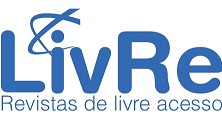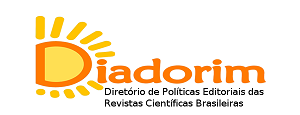EVENTOS SÍSMICOS E SUA IMPLICÂNCIA NAS EDIFICAÇÕES SITUADAS NO MORRO DO FRADE EM MONTES CLAROS – MG
DOI :
https://doi.org/10.20873/rtg.v8n16p55-71Mots-clés :
Palavras-chave: risco; sismos; urbanização; desabamentos.Résumé
O município de Montes Claros - MG, vem deparando-se com eventos relacionados à sismologia. Estudos revelam que os sismos estão associados à uma falha geológica situada no Morro do Frade. A região ainda conta com a existência de mineradoras que realizam detonações, afetando as residências existentes. A urbanização do morro ocorreu de forma desordenada, sendo essa, fruto de ocupação irregular na década de 1970, por população carente. As habitações não contaram com acompanhamento profissional sendo susceptíveis a riscos de desabamentos devido à falta de elaboração projetual. Este estudo teve por objetivo geral verificar se as edificações situadas no Morro do Frade possuem maior risco de desabamento, devido à falta de acompanhamento profissional associados à eventos sísmicos e teve por objetivos específicos contextualizar a ocupação da região do morro; apresentar a ocorrência de eventos sísmicos naturais/artificiais na região e propor alternativas, na área da arquitetura, para esse tipo de evento. O método utilizado foi de natureza aplicada, baseado em pesquisa exploratória, com procedimento fundamentado em pesquisa bibliográfica/estudo de campo. Confirmou-se que a urbanização da região se deu por ocupação irregular e devido à proximidade do ponto focal de sismo, essas residências correm maior risco de obter patologias estruturais, podendo sofrer até desabamentos. Entende-se que a municipalidade deve tomar medidas de mitigação e orientação à população residente, já que não é possível calcular de maneira exata o período e impacto de um evento sísmico em uma população urbana.
Références
ALLEN, Richard M. et al. Lições do sistema de alerta precoce do terremoto no México. EOS: Earth & Space Science News, Paris, 2018.
ALVES et al. A ação dos sismos sobre os edifícios. Universidade do Porto: Faculdade de Engenharia. Outubro de 2012, 38p.
ALVES, Lorena da Silva. Controle de vibrações em edifícios altos sujeitos a vento ou terremoto. Universidade Federal de Goiás: Escola de Engenharia Civil, 2015, 134p.
ASSOCIAÇÃO BRASILEIRA DE NORMAS TÉCNICAS. Projeto de estruturas resistentes a sismos – NBR 15421. Rio de Janeiro, 2006.
BRASIL. Censo - Instituto Brasileiro de Geografia e Estatística – IBGE, 2010. Disponível em: http://www.ibge.gov.br/home/ acesso em 18 de jun. de 2019.
CARVALHO, Bruno et al. Porque razão alguns edifícios não caem? Faculdade de Engenharia da Universidade do Porto: Mestrado Integrado em Engenharia Civil, 2015.
CEVALLOS, Bryan. Arquitectura em área de movimientos sísmicos. Instituto Latino-Americano de Tecnologia, Infraestrutura Y Territorio: Foz do Iguaçu, 2017.
CORRÊA, Roberto Lobato. O Espaço Urbano: Ática. Série Princípios. 3º edição, nº174, 1995. p.1-16.
FERES, Giovana Savietto. Habitação emergencial e temporária. Universidade Estadual de Campinas. 2014, 194p.
FERREIRA, Maykon Fredson Freitas; FERREIRA, Expedito José; ALMEIDA, Maria Ivete Soares de. Eventos sísmicos e o risco ao perigo natural nos bairros Vila Atlântida e Ibituruna – Montes Claros – MG. Revista GeoNordeste, São Cristóvão, Ano XXVIII n.2, p.190-208, Jul/Dez. 2017. ISSN: 2318-2695.
GABRICH, Felipe. De olho no fato. 2016. Disponível em: https://www.facebook.com/deolhonofato/, acesso em 19 de julho de 2019.
GIL, Antônio Carlos. Como elaborar projetos de pesquisa. São Paulo: Atlas, 2002.
MARTINS, Alex Santos; LEITE, Marcos Esdras. Análise do crescimento das favelas da cidade de Montes Claros – MG por imagens de alta resolução espacial. Anais XVII Simpósio Brasileiro de Sensoriamento Remoto – SBSR, João Pessoa-PB, 2015.
MOTTA, Ana Lúcia Torres Seroa da; SOUZA, Rafael; VAZ, Luciene. Análise sísmica nas edificações. XII Congresso Nacional de Excelência em Gestão e III Inovare – Responsabilidade Social Aplicada. 29 e 30 de setembro de 2016. ISSN: 1984-9354.
NÓBREGA, P. G. B.; NÓBREGA, S. H. S. Perigo sísmico no Brasil e a responsabilidade da engenharia de estruturas. Revista Holos, Ano 32, vol. 4, p.162-175, Jun/Jul. 2016. ISSN: 1807-1600.
OLIVEIRA, Rachel Inêz Castro de. Convivendo com os sismos em Montes Claros/MG. 8º Fórum de Ensino, Pesquisa, Extensão e Gestão: FEPEG, 2014.
PEREIRA; LOPES. Experiências e vivências dos trabalhadores da Companhia de Materiais Sulfurosos S.A. – MATSULFUR de Montes Claros – MG (1969-1994). Revista Semina, Passo Fundo-RS, v.13, n.1, p. 286-301, 2014. ISSN: 1677-1001.
PRODANOV, Cleber Cristiano; FREITAS, Ernani Cesar de. Metodologia do trabalho científico (recurso eletrônico): Novo Hamburgo: Feevale, 2013, 2ed. 277p.
SILVA, Tatiany Ferreira Silva. A Vida na Nova Cidade: O Caso Santos Reis. Universidade Estadual de Montes Claros – UNIMONTES, 2012.
UNIVERSIDADE DE SÃO PAULO; UNIVERSIDADE DE BRASÍLIA. Estudo dos tremores de terra de Montes Claros, MG, de 2012. Relatório de 11 de março de 2013. Disponível em http:// http://moho.iag.usp.br, acesso em julho 2019.
VAL, Gisela Maria do; AQUINO, Julio Groppa. O grande terremoto de Lisboa e a irrupção de uma nova ordem socioeducativa. Revista História da Educação (Online), 2019, v.23: e85688, e-ISNN: 2236-3459.
Téléchargements
Publié-e
Comment citer
Numéro
Rubrique
Licence
Revista Tocantinense de Geografia ne rémunère aucun auteur pour la publication de ses textes. Le contenu des textes publiés dans cette revue relève de la responsabilité des auteurs.








.png)












